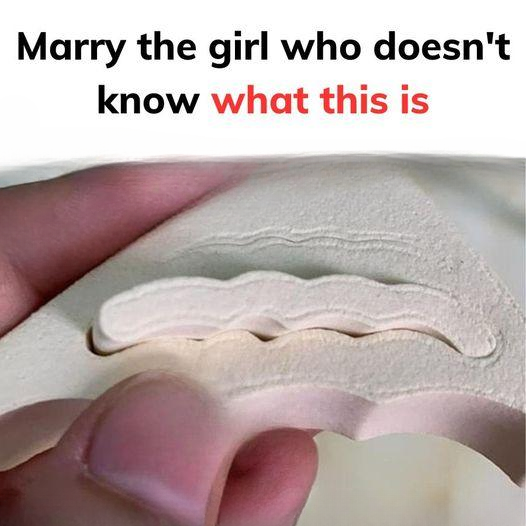It started with something small — a strange, curved object tucked inside a stranger’s discarded handbag at a thrift store. Beige, crescent-shaped, soft yet firm under my fingers. It looked almost deliberately placed, like it didn’t belong there but wanted to be found.
I bought the bag because it reminded me of my mother — classic leather, faint perfume of lilac lingering in the lining. But when I reached into the side pocket, my fingers brushed something cool and smooth. I pulled it out and held it under the kitchen light.
It made no sense. Not jewelry, not packaging. Not quite rubber, not quite foam. Its shape was precise, anatomical somehow, as if designed to fit a body… but which part? One side bore a faint adhesive strip, its plastic film intact. No logos, no markings. Whoever made it had erased every trace of its origin.
I set it on the counter, uneasy. It felt personal, almost intimate, something I wasn’t meant to hold.
The next morning, curiosity got the better of me. I brought it to work. Coworkers circled, tossing out guesses.
“Orthopedic insert?” Mark said.
“Mouse wrist rest,” Sarah joked.
“A bra insert?” Nina whispered, embarrassed.
None felt right. It was too narrow, too rigid, too deliberate. At lunch, I examined it again. Faint pressure lines ran along one edge — subtle wear from repeated contact. Pressed into my palm, it molded gently, oddly soothing.
That night, I scoured the internet, searching terms endlessly: “shoe insert,” “orthopedic pad,” “silicone cushion.” Finally, deep in a listing, I found something similar: crescent-shaped pads inside designer heels. The caption read: “Invisible comfort inserts for luxury shoes.”
Even then, it didn’t feel right. This object was engineered, deliberate. There had to be more.
The next day, I took it to a boutique. Rosa, the owner, examined it carefully. Her expression shifted instantly.
“Where did you get this?”
“I bought a used bag,” I said.
“These aren’t sold in stores,” she murmured. “Custom-made. Fitted to specific designer shoes — for models, performers, anyone standing long hours.”
“So… someone had this made for them?”
“Yes. But they always come in pairs. No one loses just one.”
Unease gnawed at me.
That night, I emptied the thrift-store bag completely. Deep in a hidden pocket, I found a folded note, soft from handling. Neat handwriting:
“Meet me where we last stood — bring the other one.”
No name. No date. But the phrasing… “bring the other one” — felt deliberate, impossible to ignore.
I called the thrift store. “Do you remember who donated a black leather bag with gold stitching?”
“We don’t track individual drop-offs,” the clerk said.
I couldn’t stop thinking. If this pad was one of a pair, where was the other? Who was supposed to bring it?
Days later, a missing-person poster caught my eye: Veronica Hale, late thirties, glamorous, smiling. Something in her stance — the subtle shift in her balance — made my stomach twist.
I searched online. Veronica, a fashion consultant for luxury brands, had disappeared two months earlier. Her handbag had been found abandoned near a train station… and later accidentally donated before police could log it.
The same thrift store. The same bag.
Cold dread swept over me. I examined the pad again. Tiny engraving near the edge: V.H. 02. Her initials.
I don’t know why I did what came next — guilt, fear, something else. I placed the pad back in its pocket, zipped the bag, and, after dark, returned it to the thrift store’s donation bin.
The next morning, the bag was gone. No record. No trace.
Maybe that’s how it should be.
Sometimes, you find something small, seemingly harmless, and the moment you start pulling the thread, it unravels into something bigger, something best left untouched.
If you ever find a crescent-shaped pad, soft and silent, with no name and no pair… think twice before keeping it.
Some things aren’t lost. They’re waiting. And sometimes, the things meant to ease your pain carry the weight of someone else’s story.
